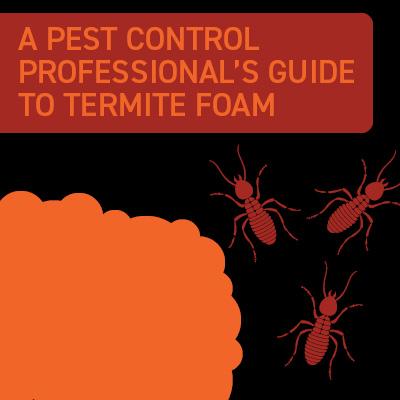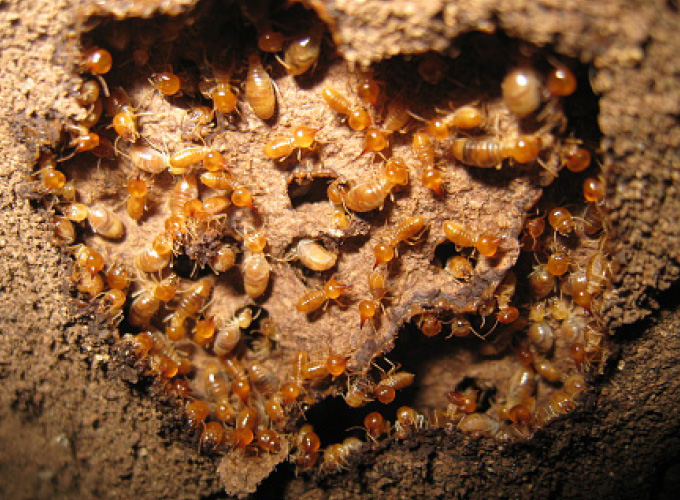
Every pest management professional knows just how destructive termites can be. These pests easily tear through a home's foundation and can leave homeowners with thousands of dollars in damage. Before it reaches the point of costly destruction, specialists can treat and prevent active infestations before they can cause any more damage. As our experts know, each termite species can benefit from different treatments. Keep reading to see when choosing a termite foam treatment could be your best option.
How does termite foam work?
Using foam for termite control can offer many benefits over its popular counterparts. The treatment itself is very similar to liquid termite treatment and can be just as effective if not more so. The foam allows professionals to deliver treatment to the core of the colonies, reaching places traditional liquid treatment cannot. The product is injected through the termite kick holes into the galleries, expanding up to 30 times its initial size. Foam can easily fill all the space in galleries, making sure the entire termite colony is eliminated.
There are two different types of termite foam that can be used. The first, in a pressurized container, is similar to shaving cream and is commonly chosen by non-professionals. However, the second kind, a liquid form, is usually reserved for specialists. Each type of termite foam is non-repellent, meaning termites will continue to eat the poisoned wood until the entire colony is dead.
How long does it last?
Termite foam treatment can last up to six weeks, but that is more than enough time to eliminate the entire colony. This product is meant to be a treatment for active infestations and will not prevent future infestations. Most professionals reach for this product at the first sign of an infestation. When wallpaper starts to bubble, sheetrock starts to bulge, or baseboards begin to show cracks and holes, it's time to recommend an immediate solution. Termite foam's rapid expansion makes it perfect for spot treatments in areas such as crawl spaces, foundations, nests, and galleries.
What active ingredients are in termite foam?
Knowing which active ingredients are in each treatment is essential to providing safe, quality pest control. Some of the most common brands of termiticide foam are Termidor Foam, Premise Foam, and Fuse. These products are typically made up of ingredients such as Fipronil and Imidacloprid. Fipronil is a widely used insecticide that eliminates insects when they eat or come in contact with the product. The product works by targeting the termites' central nervous system and disrupting their function. Similarly, Imidacloprid disrupts their nerves' ability to send a normal signal and stops the nervous system from functioning properly. Because of their commonalities, products containing each of these ingredients are equally as effective for controlling infestations.

Safety precautions for working with termite foam
Working with active ingredients requires several safety precautions. Personal protective equipment (PPE) should be worn at all times. Long sleeve shirts, eye protection, chemical-resistant gloves, long pants, and closed shoes are recommended while handling the product. The active ingredients in termiticide foam can cause skin and eye irritation, so any exposure should be rinsed with water immediately. Pets and people should stay away from the product until it is fully dried. Before the treatment is applied, technicians should refer to the label of the product to ensure all safety precautions are followed.
Equipment needed for treatment
In order to apply termite foam treatment, you may need to access hard-to-reach places. In most cases, technicians can access the colony through outlet holes, but some treatments require drilling into the wall. Professionals can expect to need a drill, drill bits, and PPE for successful treatments. When drilling into drywall, holes should be placed at least 18 inches up from the ground floor and in between each stud around the infestation. If treatment requires you to drill directly into the wood, holes should be placed every 3-4 inches. Before accessing any part of a home's structure, make sure your clients are aware of the potential risks that can occur.
Successful termite control with termite foam
Termite foam's quick and easy application often makes it the first choice for professionals when treating active colonies. Nevertheless, because it is not a preventative treatment, it’s important to offer clients long-term solutions such as termite bait stations or liquid treatment in addition to foam treatments. Educating homeowners on the benefits of each termite treatment can go a long way when building relationships with customers. Follow up in the weeks and months after treatment is completed to ensure no other signs of infestations are present. Successful termite control starts with proper care and treatment by pest management professionals.
Browse our complete line of termite foam treatments or contact our sales representatives for more information.
To learn more about termites, check out some of our other articles:

